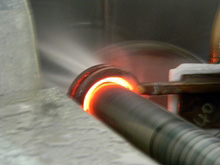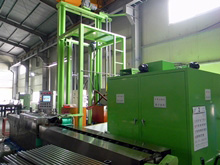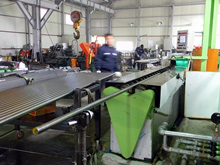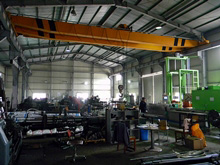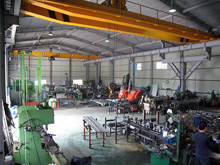고주파열처리
- 고주파열처리란
- The purpose of induction heat treatment(high-frequency quenching, tempering) in surface hardening treatment is to harden the surface of machine structure components, improving wear resistance and raising mechanical properties.
- The induction heat treatment is a method to obtain a quenched hardening layer on the surface layer by rapidly heating the surface of a heated object at the quenching temperature(generally, about 900℃) using a high-frequency induction heating method and then rapidly cooling it in quenching water.
Principle of induction heat treatment
The induction heat treatment can quench only the skin part except the core by suddenly heating only the surface of a machined part because of the skin effect of high frequency.
The induction heat treatment realizes rapid heating due to the concentration of electric currents on the skin layer as frequency is raised with the oscillator output maintained constant.
Accordingly, to perform quenching up to a certain depth, adjust and use dielectric heating equipment as follows :
- Low frequency: Short-time heating at a large-power density
- High frequency: Long-time heating at a small-power density
Although frequency is determined like this, it can be used for relatively wide uses by adjusting heating time and power density. The depth of a surface-quenched hardening layer differs depending on 3 factors such as frequency, power density(high-frequency power kW per heated surface area 1㎠) and heating time.
Quenching uses 10khz~3Mhz frequency a lot usually, among which 50khz~400khz frequency is used very much.
Induction heating has an outstanding advantage compared to the quenching method depending on metallographic surfaces.
That is, a quenching layer becomes fine martensite through short-time heating, and has uniform hardness over the entire hardening layer, with hardness rapidly decreasing approaching the core to become its original base's hardness. Rapid heating can eliminate roughing or post-treatment processes after quenching by reducing occurrence of scale or distortion.
